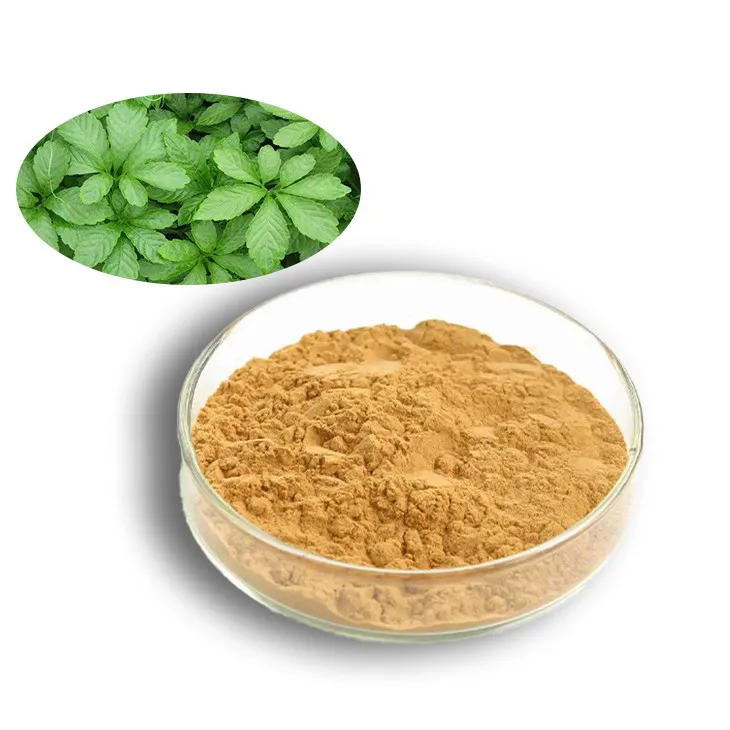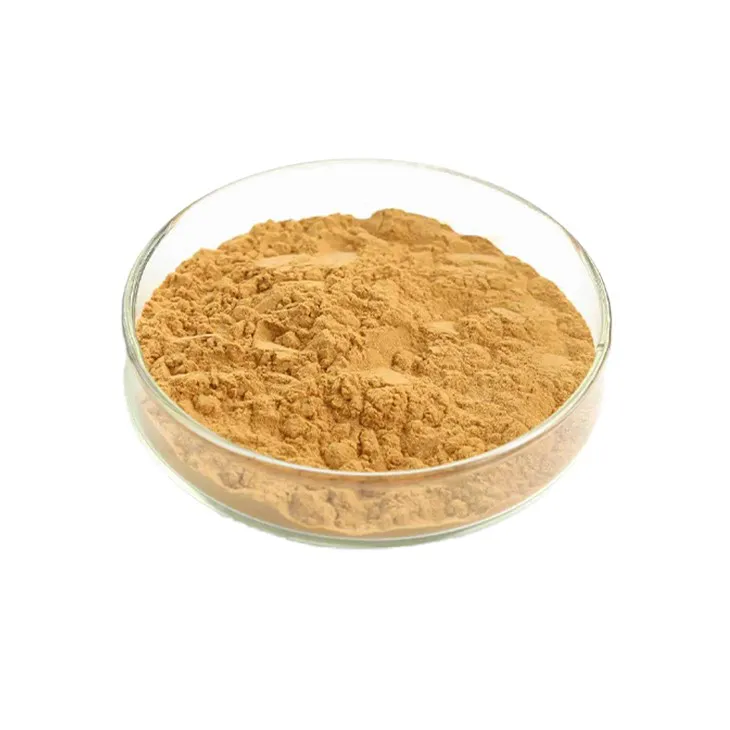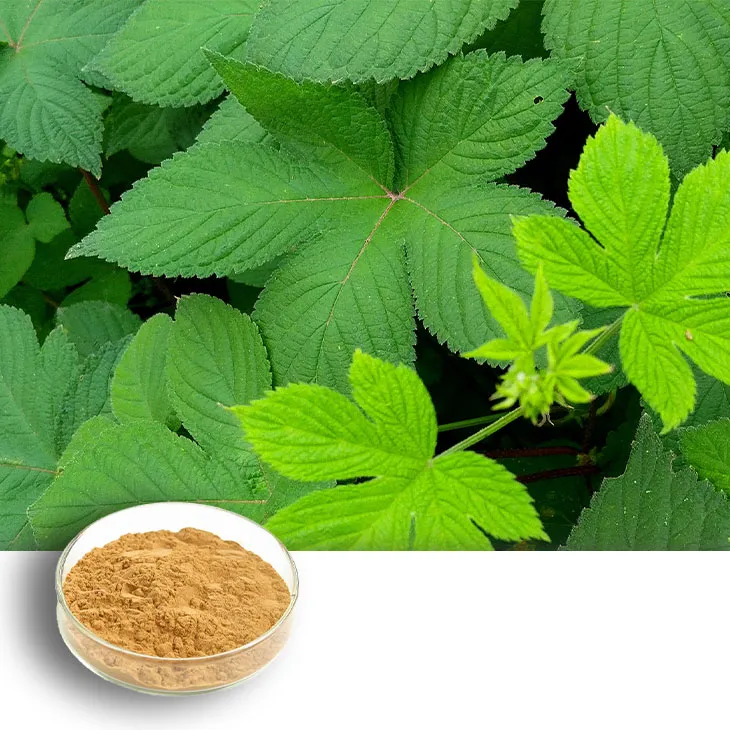- 0086-571-85302990
- sales@greenskybio.com
The process of extracting Gypenoside XLIX from Gynostemma pentaphyllum extract.
2024-11-29

1. Introduction to Gynostemma pentaphyllum and Gypenoside XLIX
Gynostemma pentaphyllum is a remarkable medicinal plant that has been used in traditional medicine for a long time. It is native to Asia and is known for its rich content of bioactive compounds. Among these compounds, Gypenoside XLIX is of particular interest due to its potential health - promoting properties. Gypenoside XLIX is a type of saponin, which is a class of chemical compounds with diverse biological activities. These activities include antioxidant, anti - inflammatory, and potential anti - cancer effects. As a result, the extraction of Gypenoside XLIX from Gynostemma pentaphyllum extract has become an important area of research in the fields of medicine and health.

2. Preparation of Gynostemma pentaphyllum extract
2.1 Selection of Raw Materials The first step in obtaining Gypenoside XLIX is to select high - quality Gynostemma pentaphyllum as the raw material. The quality of the plant can significantly affect the yield and quality of the extract. Factors such as the growth environment, harvesting time, and plant variety need to be considered. For example, plants grown in a pollution - free, natural environment are more likely to contain a higher content of bioactive components.
2.2 Solvent Extraction
- Solvent extraction is one of the most commonly used methods to obtain Gynostemma pentaphyllum extract. Different solvents can be selected based on the solubility of the target compounds.
- Ethanol is a popular solvent choice. It has the advantage of being relatively safe, and it can effectively dissolve many of the bioactive components in Gynostemma pentaphyllum. The extraction process typically involves soaking the dried Gynostemma pentaphyllum in ethanol for a certain period.
- The ratio of plant material to solvent is also crucial. A proper ratio can ensure efficient extraction. For example, a ratio of 1:5 (plant material: ethanol) may be used, but this can be adjusted depending on the specific characteristics of the raw material.
- After soaking, the mixture is usually stirred at a constant temperature to enhance the extraction efficiency. The temperature and stirring speed need to be carefully controlled. A temperature range of 40 - 60 °C and a moderate stirring speed can prevent the degradation of bioactive components while promoting extraction.
2.3 Other Extraction Methods
- In addition to solvent extraction, supercritical fluid extraction (SFE) can also be considered. Supercritical carbon dioxide is often used as the supercritical fluid. SFE has the advantage of being a relatively "green" extraction method, as it does not leave solvent residues.
- However, SFE equipment is more expensive and requires more complex operation procedures compared to solvent extraction. Therefore, its application may be limited in some cases.

3. Separation and Purification of Gypenoside XLIX
3.1 Chromatography Techniques
- Chromatography is a key technique in isolating Gypenoside XLIX from Gynostemma pentaphyllum extract. High - performance liquid chromatography (HPLC) is widely used in this process.
- HPLC works based on the differential partitioning of the components in the extract between a mobile phase and a stationary phase. For Gypenoside XLIX, the selection of the appropriate mobile phase and stationary phase is crucial.
- For example, a reversed - phase HPLC column may be used, with a mobile phase consisting of a mixture of water and acetonitrile. The ratio of water to acetonitrile can be adjusted to optimize the separation of Gypenoside XLIX from other components in the extract.
3.2 Multiple Purification Steps
- In addition to chromatography, other purification steps may be required to increase the purity of Gypenoside XLIX. One such method is recrystallization.
- Recrystallization involves dissolving the partially purified Gypenoside XLIX in a suitable solvent and then allowing it to recrystallize slowly. By carefully selecting the solvent and controlling the crystallization conditions, impurities can be further removed.
- Another approach is preparative thin - layer chromatography (PTLC). PTLC can be used for further purification of Gypenoside XLIX on a small scale. It is a relatively simple and cost - effective method for separating small amounts of samples.
3.3 Strict Control of Experimental Conditions
- Throughout the separation and purification process, strict control of experimental conditions is essential. Temperature, pressure, and flow rate are important factors that need to be monitored and adjusted.
- For example, in HPLC, a stable temperature is required to ensure accurate separation. Any fluctuations in temperature can lead to changes in the retention time of the components, affecting the separation efficiency.
- Similarly, the flow rate of the mobile phase needs to be precisely controlled. A too - high or too - low flow rate can cause poor separation or long analysis times.

4. Characterization and Quality Control of Gypenoside XLIX
4.1 Spectroscopic Methods
- After extraction and purification, it is necessary to characterize Gypenoside XLIX to confirm its identity and purity. Spectroscopic methods play an important role in this regard.
- Nuclear magnetic resonance (NMR) spectroscopy is a powerful tool for determining the structure of Gypenoside XLIX. NMR can provide detailed information about the chemical environment of atoms in the molecule, allowing for accurate identification of the compound.
- Infrared (IR) spectroscopy can also be used. IR spectroscopy can detect the functional groups present in Gypenoside XLIX, providing additional information for its identification.
4.2 Quality Control
- Quality control is crucial to ensure that the extracted Gypenoside XLIX meets the required standards. Purity is one of the most important quality parameters.
- High - performance liquid chromatography - mass spectrometry (HPLC - MS) can be used for accurate determination of the purity of Gypenoside XLIX. HPLC - MS combines the separation ability of HPLC with the detection ability of mass spectrometry, allowing for precise quantification of the compound.
- In addition to purity, other quality aspects such as the absence of contaminants and the stability of the compound also need to be considered. For example, the presence of heavy metals or other harmful substances in the Gypenoside XLIX sample needs to be detected and controlled.

5. Applications of Gypenoside XLIX in Medicine and Health
5.1 Antioxidant Activity
- Gypenoside XLIX has been shown to possess antioxidant activity. Oxidative stress is associated with many diseases, including cardiovascular diseases, neurodegenerative diseases, and cancer.
- The antioxidant activity of Gypenoside XLIX can help scavenge free radicals in the body, reducing the damage caused by oxidative stress. This may contribute to the prevention and treatment of various diseases.
5.2 Anti - inflammatory Effects
- Inflammation is a key factor in many diseases. Gypenoside XLIX has demonstrated anti - inflammatory effects in vitro and in vivo studies.
- It can regulate the expression of inflammatory cytokines, such as interleukin - 1β (IL - 1β) and tumor necrosis factor - α (TNF - α). By reducing inflammation, Gypenoside XLIX may have potential applications in the treatment of inflammatory diseases such as arthritis.
5.3 Potential Anti - cancer Properties
- Some studies have suggested that Gypenoside XLIX may have anti - cancer properties. It can affect cancer cell proliferation, apoptosis, and metastasis.
- However, more in - depth research is still needed to fully understand its anti - cancer mechanisms and to develop it as a potential anti - cancer drug.
6. Conclusion
The extraction of Gypenoside XLIX from Gynostemma pentaphyllum extract is a multi - step process that involves the preparation of the extract, separation and purification of the target compound, and quality control. Each step requires careful consideration of various factors, such as the choice of extraction method, the selection of separation techniques, and the control of experimental conditions. The extracted Gypenoside XLIX has potential applications in medicine and health due to its antioxidant, anti - inflammatory, and potential anti - cancer properties. However, further research is still needed to fully explore its biological activities and develop more effective extraction and purification methods.
FAQ:
Question 1: Why is high - quality Gynostemma pentaphyllum extract needed as the starting material?
High - quality Gynostemma pentaphyllum extract is necessary as the starting material because it provides the source of Gypenoside XLIX. A good - quality extract contains a relatively higher amount of the target compound and fewer impurities, which is beneficial for the subsequent extraction and purification processes.
Question 2: What are the common solvent extraction methods for obtaining Gynostemma pentaphyllum extract?
Common solvent extraction methods for obtaining Gynostemma pentaphyllum extract include using ethanol, methanol or a mixture of solvents. These solvents can dissolve the bioactive components from the plant material effectively. For example, ethanol extraction is often used due to its relatively low toxicity and good solubility for many plant - derived compounds.
Question 3: How does chromatography help in isolating Gypenoside XLIX?
Chromatography helps in isolating Gypenoside XLIX by taking advantage of the differences in the physical and chemical properties between Gypenoside XLIX and other components in the extract. In chromatography, different components in the mixture will move at different rates through a stationary phase and a mobile phase. Gypenoside XLIX can be separated from other substances based on its unique interaction with the stationary and mobile phases.
Question 4: What are the key experimental conditions that need to be strictly controlled during the purification process?
During the purification process, key experimental conditions that need to be strictly controlled include temperature, pH, flow rate (in the case of chromatography), and the concentration of solvents. Temperature can affect the solubility and stability of Gypenoside XLIX and other components. pH can influence the chemical form and interaction of the compounds. The flow rate in chromatography affects the separation efficiency, and the solvent concentration is crucial for proper extraction and purification.
Question 5: What are the potential applications of Gypenoside XLIX in the fields of medicine and health?
Gypenoside XLIX has potential applications in the fields of medicine and health. It may have antioxidant, anti - inflammatory, and immunomodulatory effects. It could also be explored for its potential in treating certain diseases such as cardiovascular diseases, diabetes, or cancer. However, more research is still needed to fully understand and utilize its therapeutic potential.
Related literature
- Isolation and Characterization of Gypenoside XLIX from Gynostemma pentaphyllum"
- "Advances in the Extraction and Purification of Gypenoside XLIX"
- "Bioactivity of Gypenoside XLIX: A Review"
- ▶ Hesperidin
- ▶ citrus bioflavonoids
- ▶ plant extract
- ▶ lycopene
- ▶ Diosmin
- ▶ Grape seed extract
- ▶ Sea buckthorn Juice Powder
- ▶ Beetroot powder
- ▶ Hops Extract
- ▶ Artichoke Extract
- ▶ Reishi mushroom extract
- ▶ Astaxanthin
- ▶ Green Tea Extract
- ▶ Curcumin Extract
- ▶ Horse Chestnut Extract
- ▶ Other Problems
- ▶ Boswellia Serrata Extract
- ▶ Resveratrol Extract
- ▶ Marigold Extract
- ▶ Grape Leaf Extract
- ▶ blog3
- ▶ blog4
- ▶ blog5
-
The best lemon juice powder in nature.
2024-11-29
-
Organic Vitamin K2 Powder Suppliers
2024-11-29
-
Bulk purchase of L - tyrosine.
2024-11-29
-
Vitamin K2 Manufacturers
2024-11-29
-
100% Pure Natural Rutin.
2024-11-29
-
Chinese Citrus Bioflavonoid Suppliers.
2024-11-29
-
Quercetin
2024-11-29
-
Tongkat Ali Extract
2024-11-29
-
Andrographis Paniculata Extract Powder
2024-11-29
-
Lotus leaf extract
2024-11-29
-
Green coffee bean Extract
2024-11-29
-
Maitake Mushroom Extract
2024-11-29
-
Shikone Extract
2024-11-29
-
Reishi mushroom extract
2024-11-29
-
Dan Shen Root Extract/Salvia Root Extract
2024-11-29
-
Golden Seal Extract
2024-11-29





















